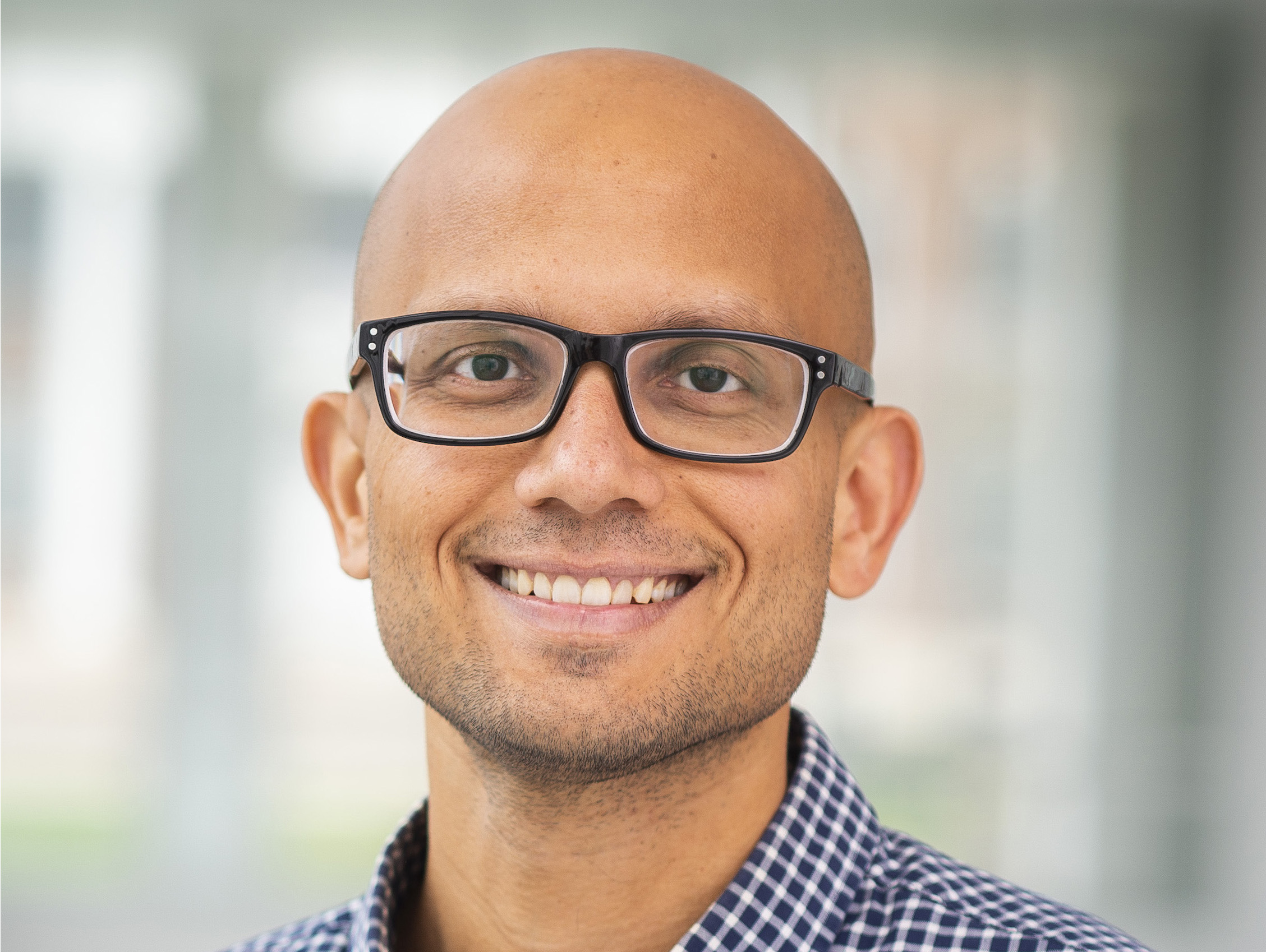UMD Chemistry and Biochemistry’s Pratyush Tiwary Receives $1.9M Maximizing Investigators’ Research Award
The award from the National Institutes of Health will support development of new methods to target precision medications
When Pratyush Tiwary arrived at the University of Maryland in 2017, he hit the ground running. In just four years, the assistant professor of chemistry and biochemistry with a joint appointment in the Institute for Physical Science and Technology (IPST), grew his lab to include six graduate students, three undergraduates and two postdoctoral associates. His team has published 27 papers, and Tiwary has stacked up a string of awards, including three prestigious grants in 2021 alone.
His most recent award is a $1.9 million Maximizing Investigators’ Research Award (MIRA) from the National Institutes of Health. It follows his receipt of a Faculty Early Career Development (CAREER) award from the National Science Foundation and an Open Eye Outstanding Junior Faculty Award from the American Chemical Society’s Division of Computers in Chemistry.
“The MIRA is a huge honor for a younger faculty member,” said Janice Reutt-Robey, chair of UMD’s Department of Chemistry. “It is an acknowledgement of Pratyush’s bold, highly creative ideas that are advancing theoretical chemistry in ways that will have meaningful benefits to society.”
The MIRA will support Tiwary’s research for the next five years.
“I was very excited to receive the MIRA,” Tiwary said. “It is meant to support research that has the potential for a really high reward in terms of discovery but is also high risk because it’s new and explores unknown paths. This is an honor that speaks to all the hard work and effort of everyone in my lab.”
Tiwary’s lab includes chemists, biophysicists and physicists because his work combines tools from theoretical chemistry, machine learning and statistical mechanics (a theoretical framework that uses probability theory to describe the movement of molecules and atoms). Their goal is to develop very precisely targeted medications by simulating the interactions between molecules involved in cancer and cancer therapies.
All drugs work by interacting with molecules in the body to block, change or otherwise interfere with some biological system. One drug may change the shape of a protein to stop it from overproducing a toxic compound. Another drug may help a molecule signal the body to do something necessary that it isn’t doing well on its own.
The challenge for researchers is that some of these molecular interactions can occur over fractions of a second and without a clear signature, which makes them too difficult for scientists to readily observe. So Tiwary simulates them using statistical mechanics. But that also poses a challenge, because the molecular movements occur over a wide range of time scales, from femtoseconds (one millionth of one billionth of a second) to minutes. Simulating interactions over such a huge range is impractical. Even a single second’s worth of activity simulated at the femtosecond scale would generate so much data that even a very powerful supercomputer would take decades to calculate it.
Tiwary’s breakthrough research addresses that problem with machine learning. He was among the first scientists to show that machine learning could help make sense of the huge amounts of data required to study and simulate molecular interactions.
At an extremely simplified level, machine learning acts like a sportscaster’s “chalk talk” during the instant replay of a football scrimmage. Sportscasters circle the ball and draw lines between key players, highlighting the important action so a viewer knows where to look to follow the game. In a similar way, Tiwary uses machine learning algorithms to find and highlight the data points that represent exactly when and where the important action happens.
“Artificial intelligence can tell you what independent factors are the most important ones in a given complex system,” Tiwary said. “By focusing our simulations on those parameters, we can take a shortcut through the data that would otherwise take the lifetime of the universe to calculate.”
The MIRA funding will allow Tiwary to expand the scope of his AI-guided discovery and hire new graduate students and postdoctoral associates. Soon, he will have nine Ph.D. students and two postdoctoral researchers working with him.
“This is our chance to scale up our methods and really get into drug discovery,” Tiwary said, “especially for targets—or disease processes—that are so flexible that one does not know how to design drugs that block them. This proposal will allow my lab take a step towards designing tailored anti-cancer drugs that work exactly at the right targets and just for the right amount of time. It will also help us predict, even before they happen, the mutations through which the body can develop resistance against drugs, thereby helping us stay one step ahead of disease.”
###
Writer: Kimbra Cutlip
Media Relations Contact: Abby Robinson, 301-405-5845, abbyr@umd.edu
University of Maryland
College of Computer, Mathematical, and Natural Sciences
2300 Symons Hall
College Park, Md. 20742
www.cmns.umd.edu
@UMDscience
About the College of Computer, Mathematical, and Natural Sciences
The College of Computer, Mathematical, and Natural Sciences at the University of Maryland educates more than 9,000 future scientific leaders in its undergraduate and graduate programs each year. The college's 10 departments and more than a dozen interdisciplinary research centers foster scientific discovery with annual sponsored research funding exceeding $200 million.








